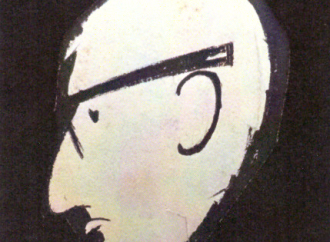Published on openDemocracy.net on October 14, 2014
The Canadian Museum for Human Rights opened this month in Winnipeg, in western Canada, reigniting a long-running controversy over its portrayal of human rights issues. Before turning to that debate, however, an initial question arises – what is a human rights museum?
At first blush, most people find the topic of human rights an odd concept for a museum. Museums are for history and relics – objects from the past. Human rights, on the other hand, are an idea – some would say an ideology – that is hard to encompass in historical objects. In any case, human rights are very much part of the present, rather than the past. Yet, the notion of the ‘ideas museum’ is hardly ground-breaking; the Museum of Tolerance in Los Angeles, which opened over 20 years ago, is a prominent example. And, indeed, there are numerous museums devoted to particular human rights struggles and which expose the mass denial of rights; consider the International Slavery Museum in Liverpool, or the Holocaust Museum in Washington.
Few things are more undermining of the human rights project – or more certain to discourage attendance at a museum dedicated to it – than the notion that human rights are beyond controversy.
This new Canadian museum, however, is the largest and most ambitious effort to date to curate, as a general topic, the subject of human rights. And not surprisingly, as this necessarily involves decisions on what to ‘display’ and how to do so, the project has been mired in controversy.
A debate erupted over the amount of floor space to be devoted to the Holocaust, for example, as compared to other genocides. Indeed, a bigger debate was over which instances of mass atrocity should be labeled ‘genocide’. Various groups and activists complained, moreover, that the museum was sidelining economic and social rights, along with issues like poverty.
Some also allege that curatorial decisions were subject to political interference aimed at emphasizing the ‘good news’ about respect for rights in Canada, at the expense of the bad.
Some commentators point to these controversies as evidence of the project’s futility and likely slide into irrelevance. Coupled with the conceit of those in central Canada that an ‘ideas’ museum can never succeed on the desolate prairie, many predict the museum will be a flop even before it has a chance to prove itself.
Canada’s Sharpest International Affairs Commentary
Don’t miss future posts on the CIPS Blog. Subscribe to our email newsletter.
These dismissals miss the point. Although controversy may not have been what the museum intended, it will be what sustains it. Few things are more undermining of the human rights project – or more certain to discourage attendance at a museum dedicated to it – than the notion that human rights are beyond controversy. In fact, we should welcome – not bemoan – debates about why the museum portrays some historical cases, and not others, of genocide and mass atrocity. We should also welcome controversy over whether the museum properly names poverty and inequality in Canada as human rights issues.
Why? For three reasons. First, precisely because human rights are contested. They are claims on power, and a benchmark for judging the exercise of power; as such, they necessarily generate disagreement. We might all agree that there is a human right to free speech, but we also hotly contest the boundaries of that right. One can understand why the museum wants to tell an uplifting story that all can unite behind. This sterilized account may be appropriate for schoolchildren, but it will ring hollow for a more mature audience.
I recall a Sudanese human rights activist describing controversies over rights by saying, “Human rights are for people you hate – because if they have rights, you may still hate them, but you won’t act on those hatreds. The people you love don’t need rights.” Too brutal perhaps; the idealist in all of us wants to believe that hatred, and not just its manifestation, can be overcome. But to strip rights of controversy is to strip them of their power to change the present.
Second, because debating historical wrongs – the Armenian genocide, colonial atrocities in Africa, ‘residential’ schools in Canada (that First Nations children were forced to attend, deliberately cut off from their families, culture and communities) – better ensures we continue to draw lessons they may teach about the present. The mere portrayal of past incidences of gross human rights abuse is not necessarily the best means to prevent their reoccurrence. After all, President Clinton opened the Holocaust Museum in Washington D.C. just one year before he and his administration actively sought to keep the UN from intervening to halt the genocide in Rwanda.
See also:
- David Petrasek, Harper at the UN: The Speech He Could (But Won’t) Give
- Roland Paris, Are Canadians Still Liberal Internationalists?
This is not to approve those who would deny atrocity – like the Holocaust – to preach hate. But rather to argue that debate as to what amounts to ‘genocide’, or what incidents of mass atrocity deserve to be portrayed, is more likely to provoke an active, not merely passive engagement with past atrocity. This in turn may encourage deeper reflection about the present.
Third, the controversies about what current issues are ‘named’ as human rights problems in the museum, and which are not, opens another, much-needed debate. Just as displaying Andres Serrano’s ‘Piss Christ” photo prompted the question, ‘what is art?’, so too including – or even more, omitting – homelessness from the museum forces us to ask, ‘what is a human right?’
Moreover, the alleged interference of political actors in museum decisions will give the question added urgency. For whereas outrage over allegedly obscene art may point to prudishness or just mere philistinism, political censorship of the human rights museum suggests something more dangerous and illuminating. Who is trying to hide what, and why?
The museum’s narrative – notwithstanding protestations of its independence – will be perceived as an official one. If it is too timid, the disadvantaged and excluded will protest; if too risk-taking, the public funders will grow anxious. In either case, the dispute is certain to widen the public’s engagement with important questions too often glossed over by ‘good news’ stories or, if controversial, left to the courts.
Already, the press is reporting near daily protests at the museum’s front entrance – long may they last!









